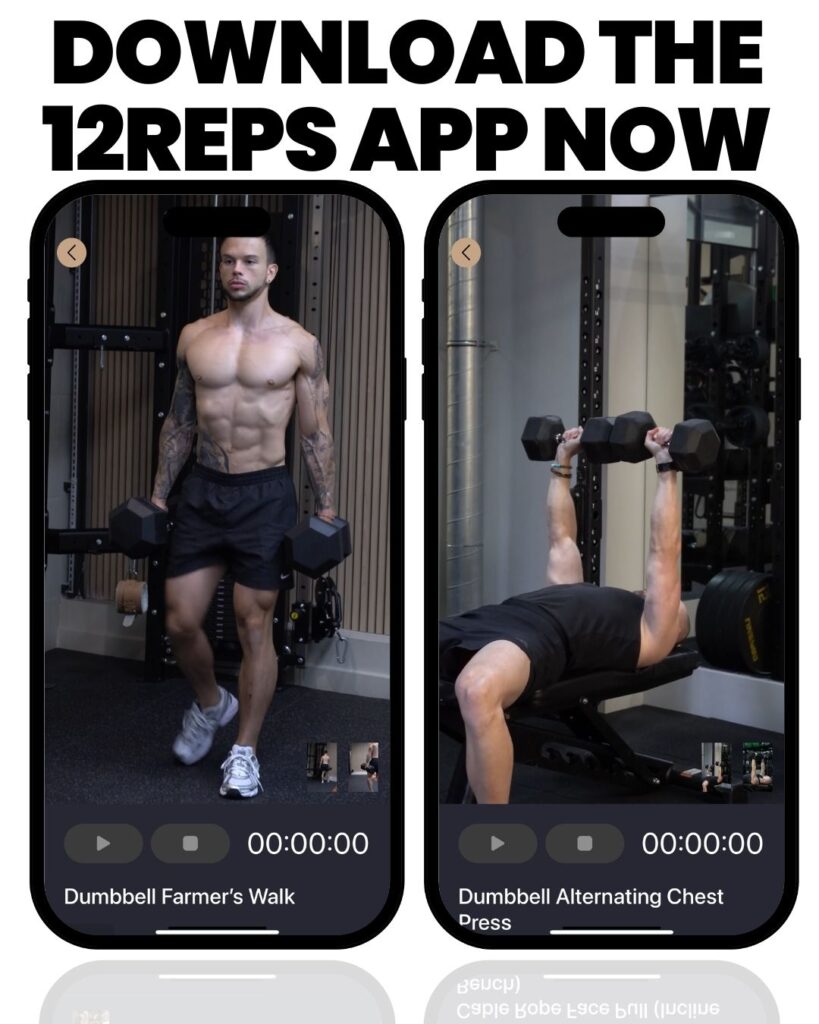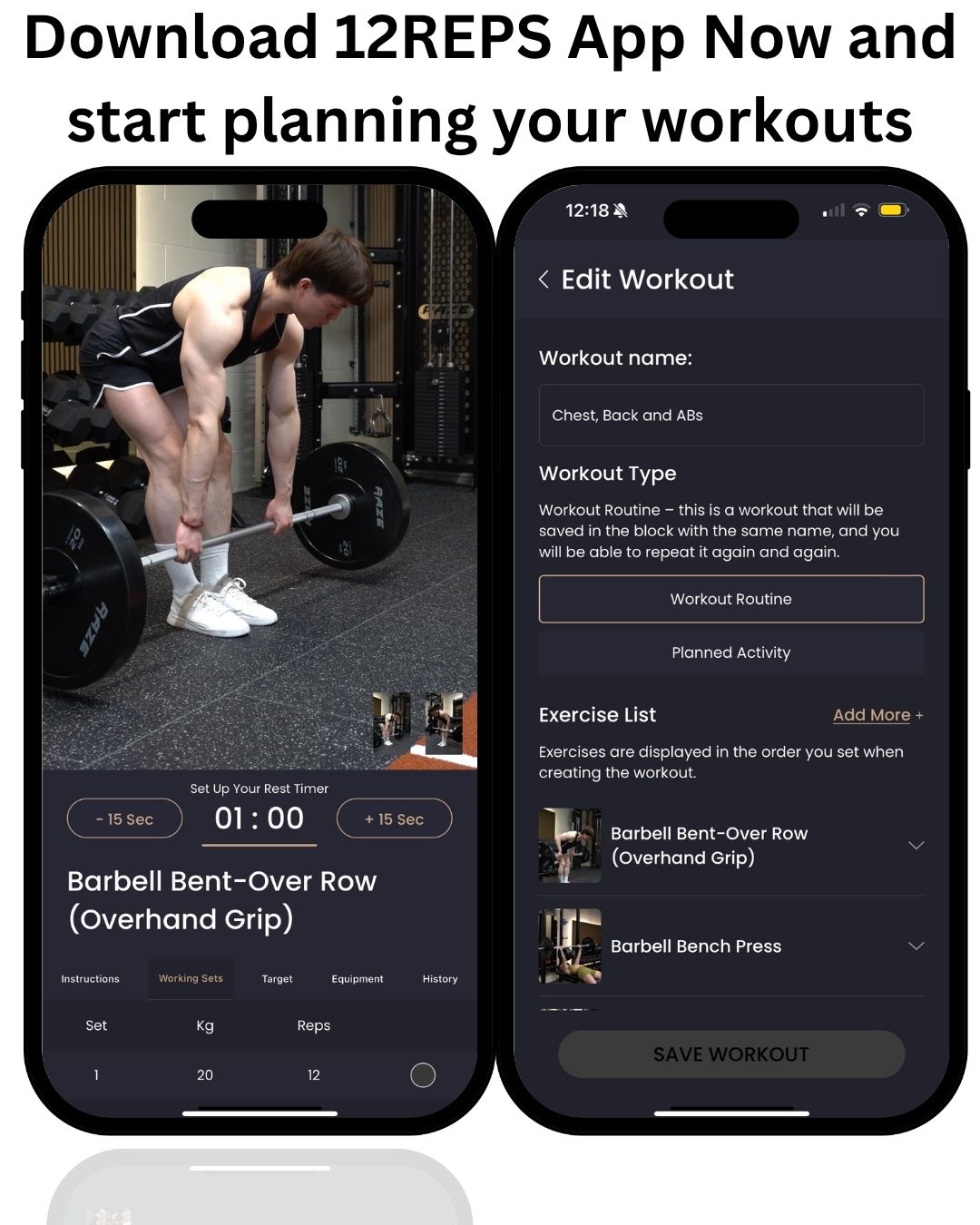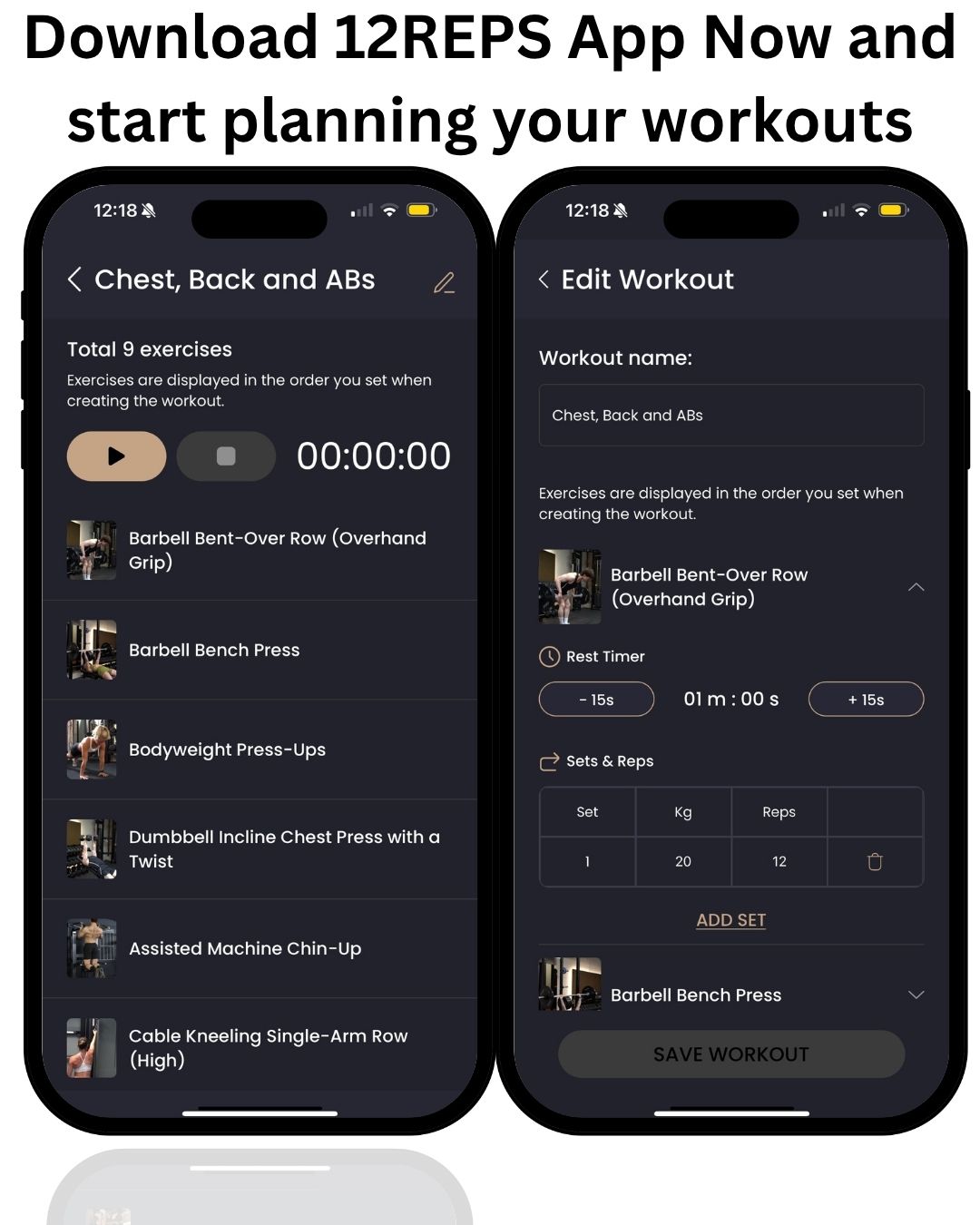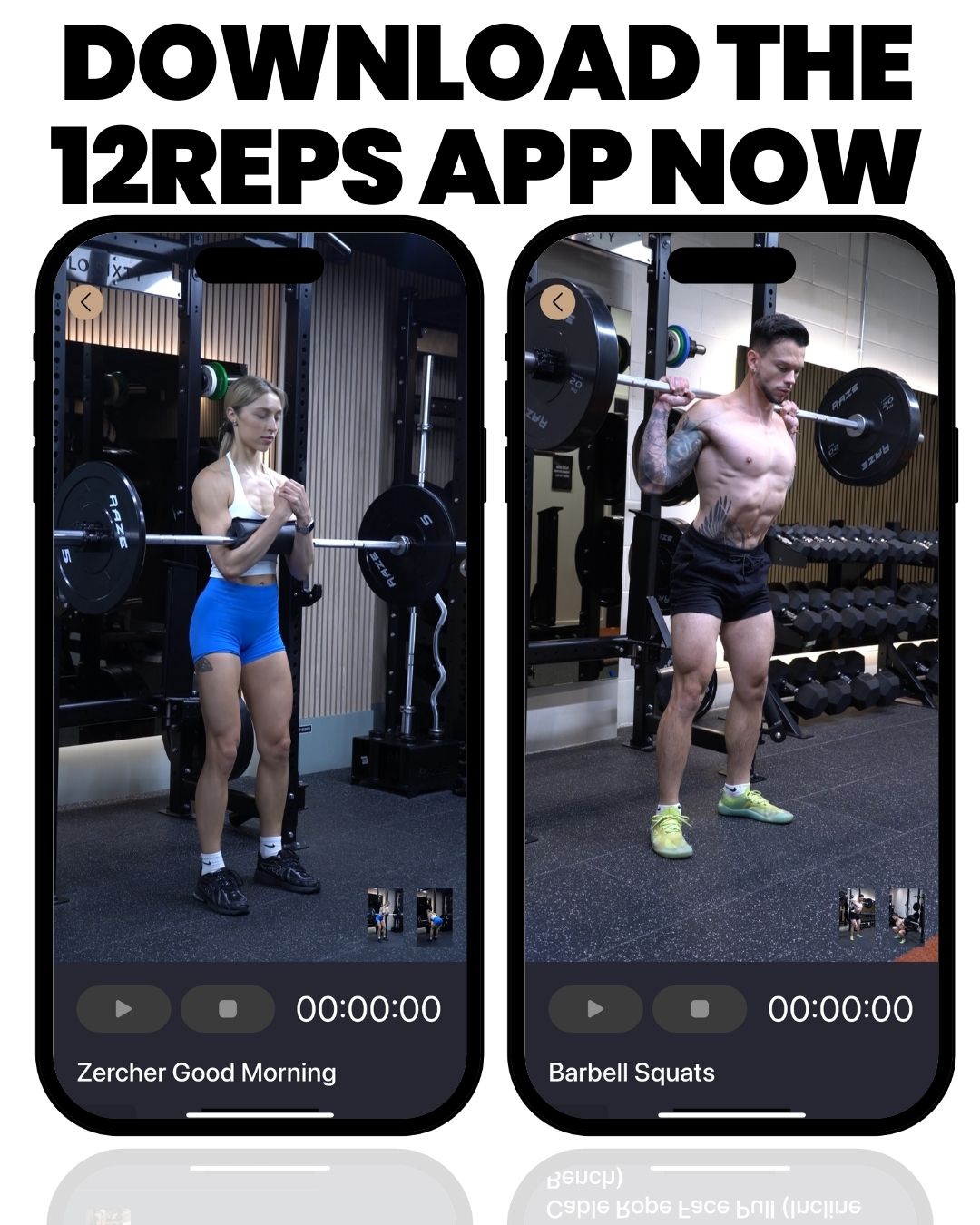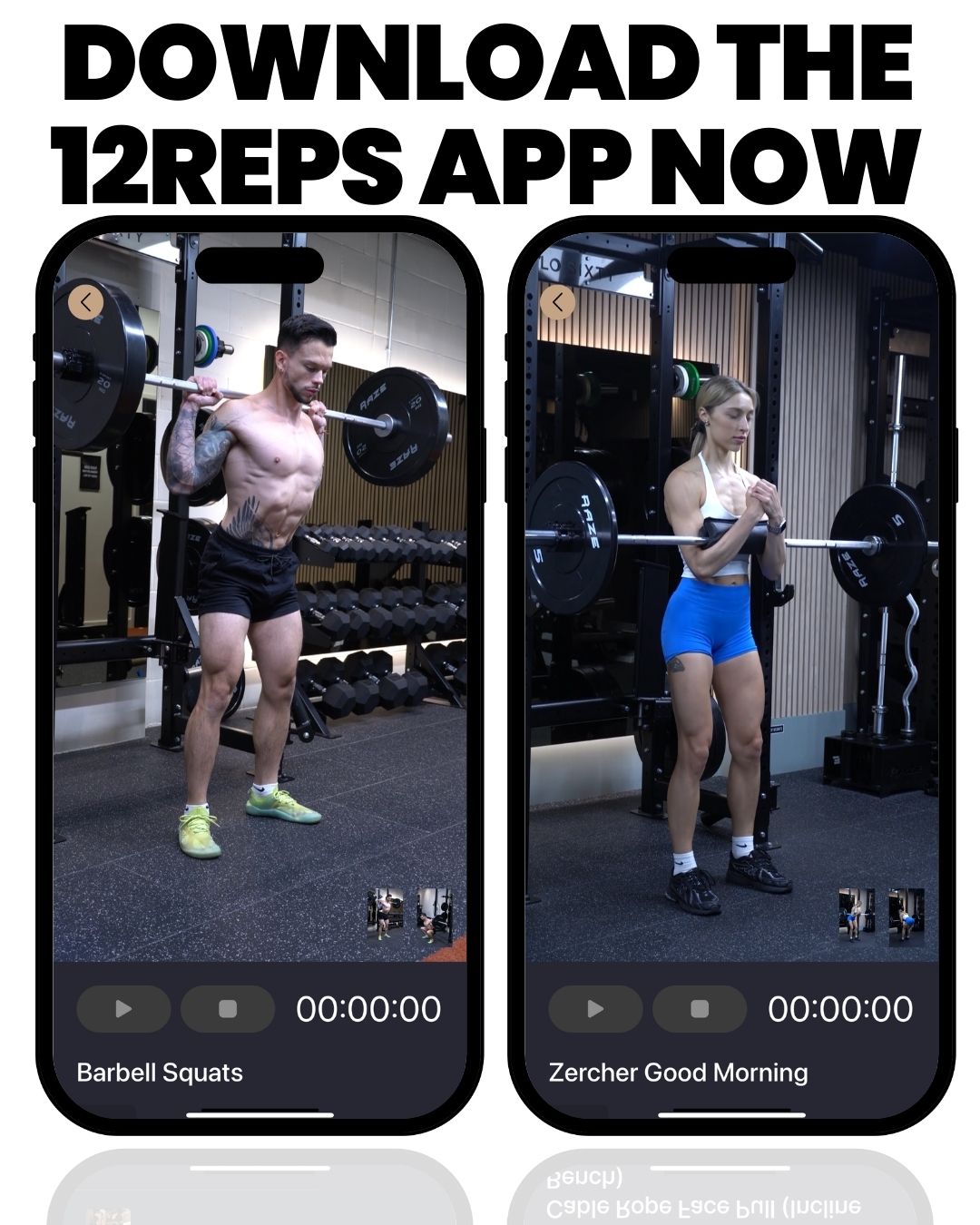By Will Duru, BSc (Hons) Sport and Exercise Science, Award-Winning Personal Trainer with over 10 years of experience in strength training and optimising recovery.
At 50, many men think their best physical years are behind them. I’ve been training men for over a decade, and I can tell you this is completely wrong. Starting strength training at 50 gives you advantages that younger men don’t have. You have patience, discipline, and the wisdom to train smart instead of hard.
The truth is, your body is ready for this challenge. Yes, your testosterone has dropped since your twenties. Yes, you’ve lost some muscle mass. But your potential for growth is still enormous. I’ve seen 50-year-old beginners gain more strength in six months than 25-year-olds gain in a year.
This twice-weekly programme is designed specifically for men over 50 who are starting from scratch. It takes 60-75 minutes per session. It works whether you train at home or in a gym. Most importantly, it’s safe and effective for your changing body.
You don’t need to spend hours in the gym. You don’t need complicated routines. You need consistency, proper form, and progressive overload. This programme gives you all three.

The Science Behind Strength Training for Men Over 50
After 30, men lose about 3-8% of their muscle mass each decade [1]. This process speeds up after 50. But strength training can stop this loss completely. In fact, it can reverse it.
Your testosterone levels drop by about 1% per year after 30. By 50, you might have 30% less testosterone than you had at 20. This affects muscle building, energy levels, and motivation. But strength training naturally boosts testosterone production.
Research shows that men over 50 can build muscle just as effectively as younger men when they train consistently [2]. The key is using the right programme and giving your body enough recovery time.
Twice-weekly training is perfect for men over 50. It gives you 48-72 hours between sessions to recover fully. Your muscles grow during rest, not during training. More isn’t always better.
Strength training also improves heart health, bone density, and mental well-being. It reduces your risk of diabetes, heart disease, and depression. For men over 50, it’s the closest thing we have to a fountain of youth.
Getting Started: Essential Preparation
Before you start, see your doctor. Get your blood pressure checked. Make sure your heart is healthy. This isn’t about being scared, it’s about being smart.
Set realistic goals. You won’t look like a bodybuilder in three months. But you will feel stronger, more energetic, and more confident. Focus on how you feel, not just how you look.
You need minimal equipment to start. A set of dumbbells, a resistance band, and a sturdy chair will get you going. If you join a gym, don’t be intimidated. Everyone started somewhere.
Safety comes first. Learn proper form before adding weight. A lightweight done correctly beats a heavyweight done badly. Your joints have 50 years of wear on them. Respect that.
Leave your ego at the door. The 25-year-old next to you might lift more weight. So what? You’re not competing with him. You’re competing with the man you were yesterday.
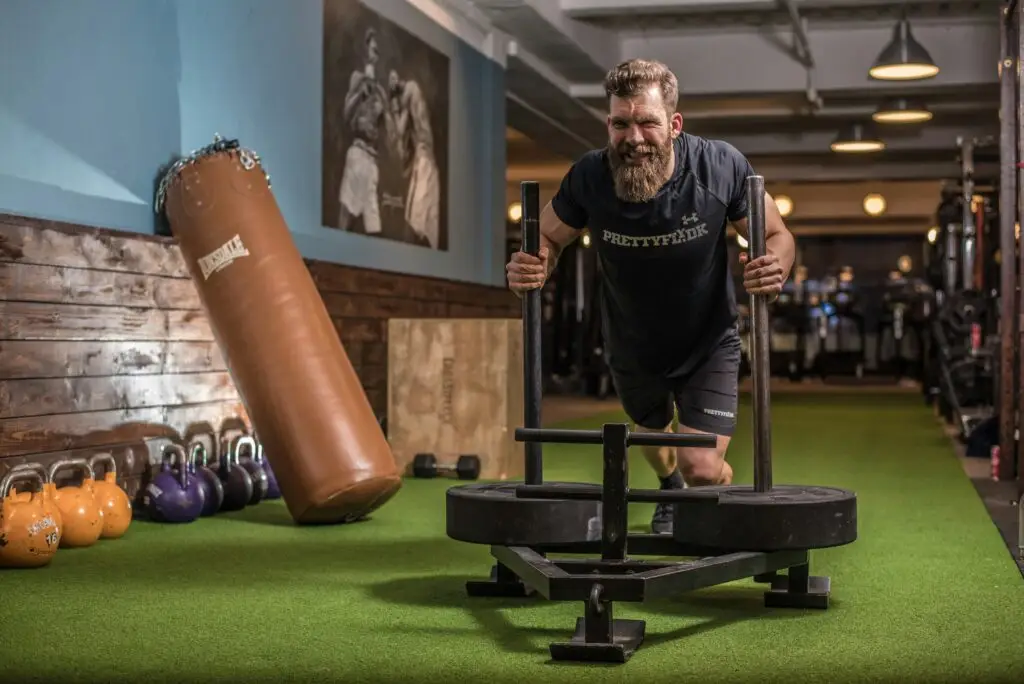
The Complete Twice-Weekly Programme Structure
This programme uses full-body workouts twice per week. Monday and Thursday work well, but any two days with 48-72 hours between them are fine.
Each session takes 60-75 minutes, including warm-up and cool-down. The main workout is 45-50 minutes. This fits into most schedules without taking over your life.
You’ll do two different workouts: Workout A focuses on foundation movements. Workout B focuses on functional strength. Both work your entire body but with different exercises.
The programme progresses over 16 weeks. Week 1-4 focus on learning movements. Week 5-8: add more weight and volume. Week 9-12 increase intensity. Week 13-16 prepares you for intermediate training.
Rest days are crucial. Your muscles grow during recovery, not during training. Use rest days for light walking, stretching, or complete rest. Listen to your body.
Complete Workout Structure
| Workout | Exercise | Equipment | Sets | Reps | Rest |
| A | Goblet Squats | Dumbbell/Kettlebell | 5 | 8-12 | 90-120 sec |
| A | Push-Ups | Bodyweight | 4 | 6-12 | 90-120 sec |
| A | Resistance Band Rows | Resistance Band | 5 | 10-15 | 60-90 sec |
| A | Dumbbell Overhead Press | Dumbbell | 4 | 8-12 | 90-120 sec |
| A | Plank | Bodyweight | 4 | 30-60 sec | 60-90 sec |
| B | Kettlebell Deadlifts | Kettlebell | 5 | 8-12 | 120-180 sec |
| B | Dumbbell Lunges | Dumbbell | 4 | 8-10 each leg | 90-120 sec |
| B | Resistance Band Chest Press | Resistance Band | 5 | 10-15 | 60-90 sec |
| B | Kettlebell Swings | Kettlebell | 4 | 15-20 | 90-120 sec |
| B | Dumbbell Step-Ups | Dumbbell | 4 | 8-10 each leg | 90-120 sec |
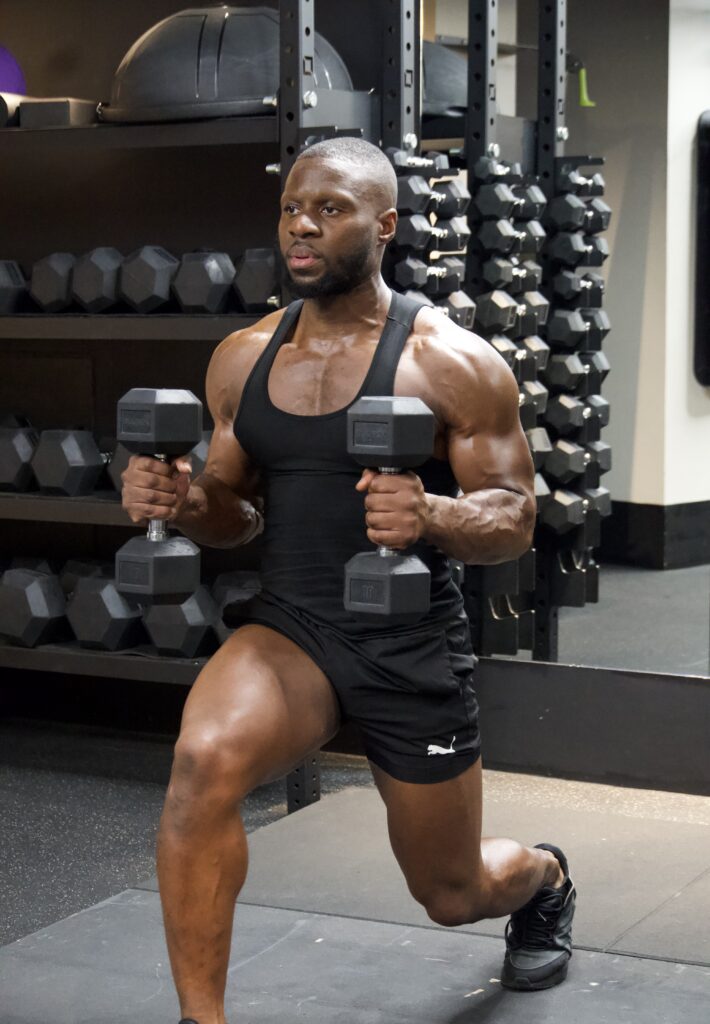
Workout A: Foundation Power Session
Warm-Up (15 minutes) Start with 5 minutes of light movement. March on the spot, swing your arms, rotate your joints. Then do dynamic stretches. Leg swings, arm circles, hip circles. Your body needs time to wake up.
Exercise 1: Goblet Squats (5 sets of 8-12 reps) Hold a dumbbell or kettlebell at chest level. Stand with feet shoulder-width apart. Sit back like you’re sitting in a chair. Go as low as you can comfortably. Keep your chest up and knees in line with your toes. The weight helps you balance and teaches proper form. Start light and focus on depth.
Common mistakes: Knees caving in, not going deep enough, and holding your breath. Master the movement before adding weight.
Exercise 2: Push-Ups (4 sets of 6-12 reps) Start against a wall if needed. Progress to incline push-ups using a step. Then knee push-ups. Finally, full push-ups.Keep your body straight from head to heels. Lower until your chest nearly touches the ground. Push back up smoothly.Don’t rush. Quality beats quantity every time. Each rep should look identical.
Exercise 3: Resistance Band Rows (5 sets of 10-15 reps) Anchor the band at chest height or stand on it. Pull the handles to your chest. Keep your back straight and squeeze your shoulder blades together.
This exercise fixes the rounded shoulders that come from desk work. Focus on pulling your shoulder blades back first, then your arms.Start with light resistance. Progress by using a thicker band or stepping further from the anchor point.
Exercise 4: Dumbbell Overhead Press (4 sets of 8-12 reps) Start with light dumbbells. Press them overhead in a straight line. Keep your core tight to protect your lower back.
Don’t arch your back excessively. If you can’t press without arching, the weight is too heavy. Start seated if needed. This exercise builds functional overhead strength for daily activities.
Exercise 5: Plank (4 sets of 30-60 seconds) Start on your knees if needed. Progress to full plank on your toes. Keep your body straight. Don’t let your hips sag or pike up.
Start with 30 seconds. Add 5-10 seconds each week. Work up to 60 seconds. Breathe normally throughout.
Cool-Down (10 minutes) Stretch all the muscles you’ve worked. Hold each stretch for 30 seconds. Focus on your chest, shoulders, hips, and legs.

Workout B: Functional Strength Session
Warm-Up (15 minutes) Same as Workout A. Light movement followed by dynamic stretches. Pay extra attention to your hips and hamstrings before deadlifts.
Exercise 1: Kettlebell Deadlifts (5 sets of 8-12 reps) This is the king of exercises. It works more muscles than any other movement. Start by learning the hip hinge pattern with no weight.
Stand with feet hip-width apart. Push your hips back and lean forward. Keep your back straight. Feel the stretch in your hamstrings.
Hold the kettlebell with both hands. Drive through your heels and push your hips forward to stand up. Keep the kettlebell close to your body.
Exercise 2: Dumbbell Lunges (4 sets of 8-10 each leg) Hold dumbbells at your sides. Step forward into a lunge position. Lower your back knee towards the ground. Push back to standing.
Keep most of your weight on your front leg. Don’t let your front knee go past your toes. This exercise improves balance and leg strength. Alternate legs or complete all reps on one side before switching. Both methods work well.
Exercise 3: Resistance Band Chest Press (5 sets of 10-15 reps). Anchor the band behind you at chest height. Hold the handles and step forward to create tension. Press forward and slightly together.
This builds pushing strength for daily activities. It also develops your chest, shoulders, and triceps without needing a bench. Control the band on the way back. Don’t let it snap back quickly.
Exercise 4: Kettlebell Swings (4 sets of 15-20 reps). This exercise builds power and cardiovascular fitness. Start with the kettlebell on the ground between your feet.
Hinge at your hips and grab the kettlebell. Swing it back between your legs, then drive your hips forward to swing it to chest height. The power comes from your hips, not your arms. Keep your core tight throughout the movement.
Exercise 5: Dumbbell Step-Ups (4 sets of 8-10 each leg) Hold dumbbells at your sides. Step up onto a sturdy box or step. Step down slowly and controlled. Use your leg muscles to step up, not momentum. Don’t push off your back foot. This builds functional leg strength and balance. Start with a low step and progress to higher steps as you get stronger.
Cool-Down (10 minutes): Comprehensive stretching focusing on all major muscle groups. Pay special attention to your hips, hamstrings, and shoulders.
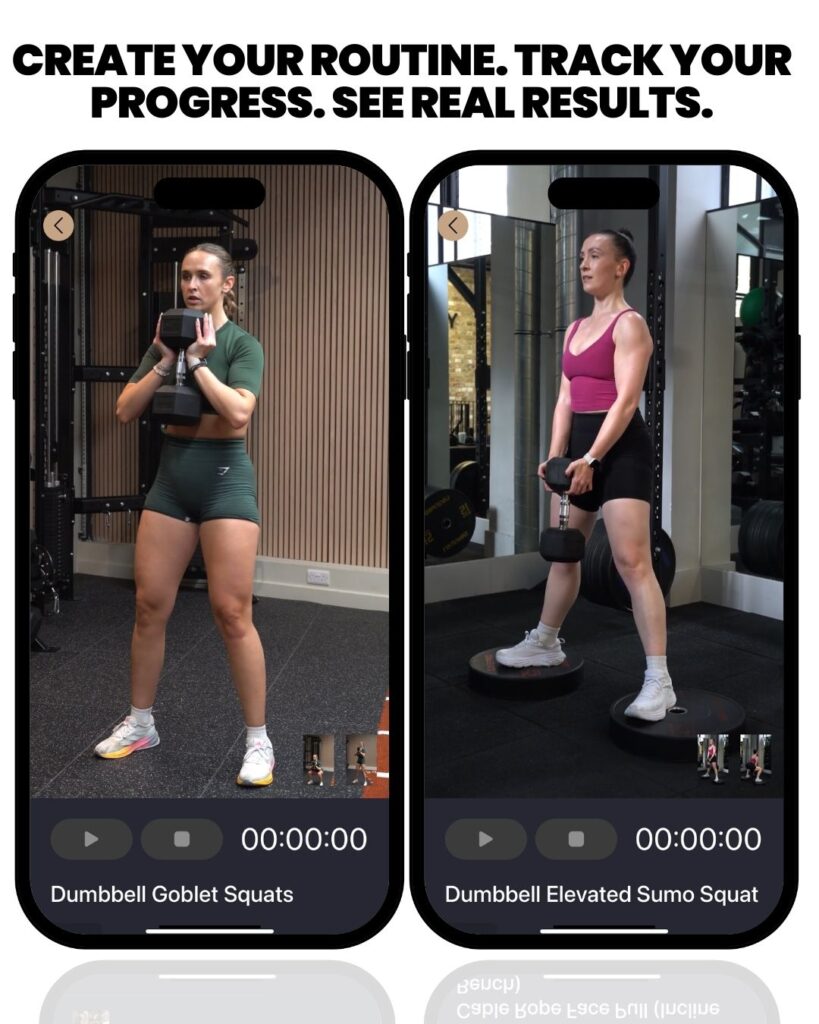
Progressive Overload for Men Over 50
Progressive overload means gradually increasing the intensity of your workouts. This forces your muscles to adapt and grow stronger.
For men over 50, progression must be conservative. Add weight slowly. Focus on perfect form. Your joints need time to adapt along with your muscles.
Week 1-2: Learn the movements with light weight or bodyweight. Week 3-4: Add small amounts of weight or extra reps. Week 5-8: Continue adding weight gradually. Week 9-12: Focus on perfect form with challenging weights. Week 13-16: Prepare for more advanced training.
Signs you’re ready to progress: You can complete all sets and reps with perfect form. The last 2-3 reps feel challenging but not impossible. You recover fully between sessions. Don’t rush. Slow, steady progress beats rapid gains followed by injury.
Nutrition for Strength and Vitality
Nutrition becomes more important as you age. Your body needs more protein to build and maintain muscle. Aim for 1.2-1.6 grams per kilogram of body weight daily [3].
Eat protein with every meal. Good sources include chicken, fish, eggs, dairy, beans, and protein powder. Spread your protein throughout the day for best results.
Don’t forget carbohydrates. They fuel your workouts and help with recovery. Choose whole grains, fruits, and vegetables over processed foods.
Stay hydrated. Aim for 8-10 glasses of water daily. More if you’re active or live in a hot climate.
Consider these supplements: Vitamin D, Omega-3 fatty acids, and a good multivitamin. These support overall health and may help with testosterone production.
Time your nutrition around workouts. Eat a small meal 2-3 hours before training. Have protein within 2 hours after training to support muscle growth.
Recovery and Lifestyle Integration
Sleep is crucial for men over 50. Aim for 7-9 hours per night. Poor sleep hurts testosterone production, muscle growth, and recovery.
Create a sleep routine. Go to bed and wake up at the same time. Keep your bedroom cool and dark. Avoid screens for an hour before bed.
Manage stress. Chronic stress raises cortisol, which breaks down muscle and lowers testosterone. Find healthy ways to cope: meditation, hobbies, time with family.
Stay active on rest days. Light walking, gentle stretching, or recreational activities help with recovery. Don’t sit all day. Listen to your body. Some soreness is normal. Sharp pain is not. If something hurts, stop and assess. When in doubt, rest an extra day.
Common Challenges and Solutions
“I don’t have time” This programme takes 2.5 hours per week. That’s less time than most people spend watching TV in one evening. Make it a priority.
“I’m too out of shape” Everyone starts somewhere. The programme scales to your current fitness level. Start where you are, not where you think you should be.
“I’m intimidated by the gym” Most people are focused on their own workouts. Start during off-peak hours when it’s quieter. Or begin at home with bodyweight exercises.
“I don’t see results fast enough” Results take time, especially after 50. Focus on how you feel: stronger, more energetic, sleeping better. The visual changes will follow.
“My joints hurt” Some stiffness is normal when starting. Sharp pain is not. Warm up thoroughly, use proper form, and progress slowly. See a doctor if pain persists.
Tracking Progress and Success
Track more than just weight lifted. Measure how you feel, your energy levels, and your confidence. These matter more than numbers on a bar.
Keep a simple training log. Write down exercises, sets, reps, and weights used. Note how you felt during and after the workout.
Take progress photos monthly. You see yourself daily, so changes are hard to notice. Photos reveal progress you might miss.
Celebrate small wins. Completing your first full push-up. Adding 5 pounds to your squat. Sleeping better. These victories matter.
Focus on functional improvements. Can you carry groceries more easily? Climb stairs without getting winded? Play with grandchildren longer? This is real progress.
Mental Health and Confidence Building
Strength training does more than build muscle. It builds confidence, reduces anxiety, and improves mood. The discipline required carries over to other areas of life.
Set small, achievable goals. Meeting these goals builds confidence. Confidence motivates you to set bigger goals. It’s a positive cycle.
Don’t compare yourself to others. Compare yourself to who you were yesterday. Progress is personal.
Embrace the process. Some days will be harder than others. Some workouts will feel amazing, others will be a struggle. Both are part of the journey.
Find your why. Maybe it’s being healthy for your family. Maybe it’s proving to yourself that you can do hard things. Whatever it is, remember it when motivation is low.
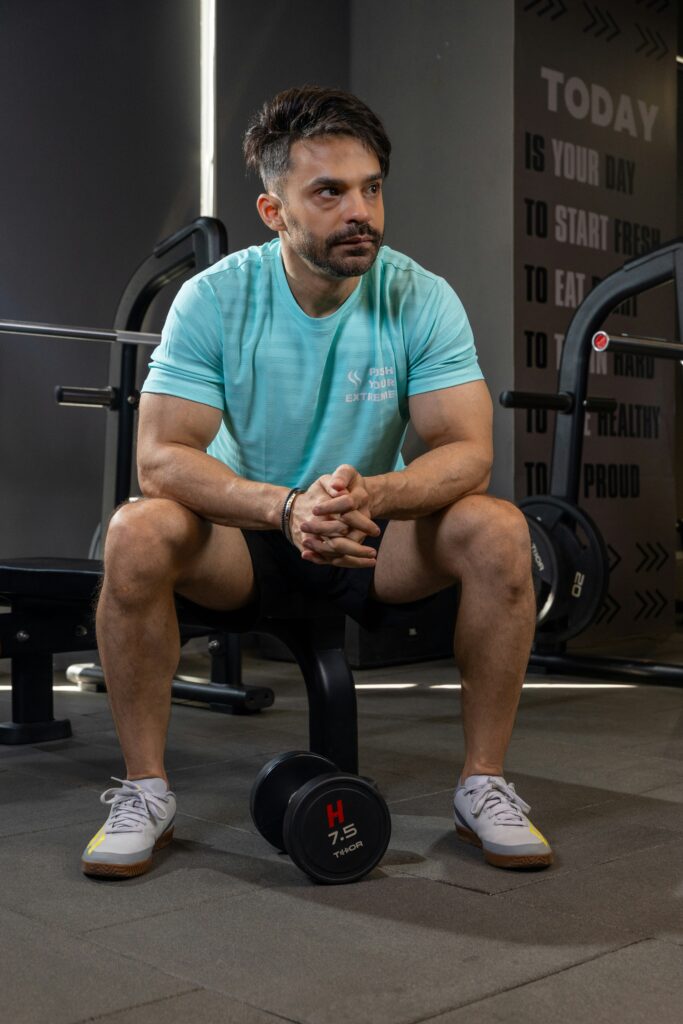
Conclusion and Next Steps
Starting strength training at 50 isn’t about turning back the clock. It’s about making the most of the years ahead. This programme gives you the tools to build strength, confidence, and vitality.
Your first step is to start. Don’t wait for the perfect time or until you feel ready. Begin with what you have, where you are.
Be consistent. Two workouts per week for 16 weeks will transform your body and mind. Miss a session here and there, but don’t quit.
Be patient. Results take time, especially after 50. Trust the process and focus on how you feel, not just how you look.
Most importantly, enjoy the journey. Strength training should enhance your life, not consume it. Find joy in getting stronger, more capable, and more confident.
Your best years aren’t behind you. They’re ahead of you. This programme is your roadmap to claim them.
